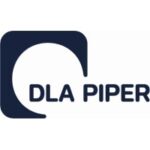-
How active is the securitisation market in your jurisdiction? What types of securitisations are typical in terms of underlying assets and receivables?
The securitization market in Switzerland is currently characterized by a stable yet cautious environment, driven by both domestic and global economic and political factors. While in 2024 interest rates tended to fall, the current US administration is recently causing volatility on the markets. Therefore, despite the current low interest rate environment, investors remain cautious and beware of further developments. Besides, although supportive of lower borrowing costs, the currently rather low interest environment has compressed yields on many securitized products, making it challenging for investors to find attractive returns.
With investors facing the prospect of volatile markets risks, both supply and demand activities remain conservative. Swiss banks have generally maintained a cautious stance on lending in recent years, prioritizing conservative risk management practices amid global economic uncertainty. While they continue to offer lending products, including those tied to securitization, there is a noticeable focus on maintaining strong credit quality, especially in light of the current low interest rate environment and potential economic volatility. This conservative approach has made banks more selective in their lending activities, favoring stable and low-risk borrowers. At the same time, alternative financiers such as investment funds and other non-banks remain susceptible to liquidity, credit and leverage risks.
Due to the ongoing global crises, including geopolitical tensions and economic instability, ESG (Environmental, Social, and Governance) considerations have taken a backseat in the Swiss market, with investors and institutions shifting focus back to traditional, safer assets. The need for stability and protection against market volatility has driven demand for more conventional investment products, while the emphasis on sustainability has somewhat diminished in the short term.
The type of underlying assets and receivables typically include residential mortgage-backed securities, auto loan-backed securities, credit card receivables and trade receivables, with credit cards portfolios and auto lease forming in terms of size the main types of securitisation transactions. Contractual covered bond programs focusing on the Swiss market have been established within the last couple of years. Most of the issuances carried out in Switzerland are private placements, but some of these issuances are public and even listed.
-
What assets can be securitised (and are there assets which are prohibited from being securitised)?
To date, the most common financial assets that have been securitised are collateralised loan obligations, auto leases, credit card receivables and trade receivables. Theoretically, any type of asset, i.e., receivable can be securitised and there is no specific statute in Switzerland that would generally prohibit the securitisation of certain asset classes. From a conceptual point of view, all financial assets that are assignable or transferable and have a relatively predictable cash flow are eligible for securitisation. However, suitability considerations with regard to a specific type of assets also apply in Switzerland. In the future, sustainability considerations with regard to a specific type of assets may play a bigger role also in Swiss securitisation.
-
What legislation governs securitisation in your jurisdiction? Which types of transactions fall within the scope of this legislation?
As there is no specific securitisation law in Switzerland, the general Swiss legal framework is applicable. Regarding the transfer of assets from the originator to the Special Purpose Vehicle (“SPV“), the provisions of the Swiss Code of Obligations apply (in particular, the provisions regarding sale and assignment). For the establishment, management and organisation of a SPV in Switzerland, it is also the Swiss Code of Obligations that mainly provides the relevant legal framework and sets forth the requirements for establishing and organising the SPV, for the management’s status and the shareholder’s or quotaholders rights.
In addition, general capital market laws apply regarding the issuance of debt securities by Swiss SPVs. Furthermore, if debt securities are listed on a Swiss exchange, the listing rules of such exchange may become relevant. Asset-backed securities transactions may also be subject to the provisions of the Swiss Financial Services act (“FinSA“), in particular to the obligation to prepare a prospectus in case of public offerings.
-
Give a brief overview of the typical legal structures used in your jurisdiction for securitisations and key parties involved.
In Switzerland, securitisation transactions are structured as true-sale securitisations or synthetic securitisations.
As in other jurisdictions, the securitisation transaction is often initiated by the sponsor. The sponsor is often a bank that is responsible for originating and servicing the underlying assets. As such, the sponsor normally contributes the assets to an SPV or a multi-seller conduit and may continue to service the payments and customer relationship. The SPV in Switzerland is typically incorporated as a newly established Swiss corporation limited by shares (Aktiengesellschaft – AG) or limited liability company (Gesellschaft mit beschränkter Haftung – GmbH). Usually, the SPV would be a subsidiary or affiliate of the originator.
In a true-sale securitisation, the SPV as issuer buys the assets from the originator, therefore becoming the legal owner of the assets. In case of a synthetic securitisation transaction, the SPV only takes risk positions (for the structure, see further below). Either the SPV manages the assets by itself or delegates such management to a servicer, which is often identical to the originator. Servicers are mainly responsible for collecting the cash flows (in a timely manner) that are generated by the underlying assets and relaying them to the SPVs.
In order to finance the purchase of the assets, the SPV will issue asset-backed securities to investors. Investors provide funds to the SPV and effectively take the role of a lender to the SPV. By issuing different security tranches, the SPV tailors the tranches’ risk-return profile to the risk tolerance of investors. Further key parties that may be involved in securitisation transactions are underwriters and placing agents. They are responsible for structuring the asset backed security, including the composition of tranches, credit and liquidity enhancements. Underwriters are also responsible for securities sales. If they buy the securities from the SPV to resell, they will also bear risks in relation to the transaction.
With regard to synthetic securitisation, the format used is the funded structure. In order to synthetically transfer credit risk, the originator (the protection buyer) usually enters into a credit default swap (CDS) with an SPV (the protection seller) and pays a risk premium to the SPV. The SPV issues credit-linked notes to investors and uses the proceeds of the issuance to purchase safe asset classes, such as government bonds (treasuries). The risk premium and the interest earned by the SPV on the safe-assets classes are used to service the investors’ returns. In contrast to funded structures, only credit derivatives or guarantees are deployed in an unfunded synthetic structure.
-
Which body is responsible for regulating securitisation in your jurisdiction?
There is no specific regulatory authority for securitisation transactions. However, confirmation of the Swiss Financial Market Supervisory Authority (“FINMA“) may be sought regarding certain regulatory matters such as licencing requirements or non-consolidation in bankruptcy. In addition, the SIX Swiss Exchange or the BX Swiss Exchange may be relevant regarding certain listing-related matters if the securities will be listed. Further, tax authorities may play a role if a tax ruling is obtained in connection with securitisation transactions.
-
Are there regulatory or other limitations on the nature of entities that may participate in a securitisation (either on the sell side or the buy side)?
Generally, the Swiss legal and regulatory environment for the issuance of any debt securities is favorable from an issuer’s point of view. Typically, the issuer is not required to obtain a banking license or a license for collective investment schemes by publicly or privately offering bonds or notes. However, this needs to be analyzed on a case-to-case basis, depending on the underlying asset and business of the originator.
For banks securitising financial assets the Capital Adequacy Ordinance applies. The Ordinance states that securitisation positions must be weighted according to their risk, with FINMA being competent to issue implementing provisions.
There are no other securitisation-specific regulatory rules that apply to other types of entities. In principle, the Capital Adequacy Ordinance and the relevant FINMA-Circulars apply for banks and securities dealers and financial conglomerates.
All types of investors invest in securitisations, such as, for example, financial institutions or pension funds. The relevant rules for financial institutions are contained in the Capital Adequacy Ordinance. As regards the investments of pension funds, for example, the rules on such investments are found in the Ordinance on Occupational Retirement and Disability Insurance No 2.
Financial service providers offering or selling asset-backed securities to their clients are subject to point-of-sale obligations under FinSA (eg, they will be obliged to perform suitability and appropriateness checks, depending on the relevant client).
-
Does your jurisdiction have a concept of “simple, transparent and comparable” securitisations?
Unlike the EU, Switzerland does not have a concept of simple, transparent and comparable securitisations or similar. However, the regulation of the EU with regard to the “simple, transparent and standardised”(“STS“) label also has implications for Switzerland. Securitisations from Switzerland can benefit from the STS label if the requirements of the regulation are met and a corresponding STS notification is submitted to ESMA.
-
Does your jurisdiction distinguish between private and public securitisations?
If the asset backed securities are publicly offered in Switzerland or admitted to trading on a trading platform in Switzerland, the FinSA provides for certain prospectus rules that need to be observed by the issuer. In addition, general capital market regulations and listing requirements may be applicable, depending on where the securities are offered. In case of a private placement of debt securities in Switzerland (ie, the offering of debt securities exclusively to a restricted circle of investors), the issuer does not have to prepare an issue prospectus or any other offering document.
-
Are there registration, authorisation or other filing requirements in relation to securitisations in your jurisdiction (either in relation to participants or transactions themselves)?
Asset-backed securities transactions may become subject to the Swiss prospectus regime under the FinSA. The prospectus rules under FinSA generally apply to all securities offered publicly into or in Switzerland, or admitted to trading on a trading platform in Switzerland. Hence, in case of public offerings and unless an exemption by type of offer or by type of securities as set out in FinSA apply, a prospectus has to be prepared and approved by a reviewing body prior to publication.
The originator itself may be subject to licencing requirements such as a banking licence or a securities firm license, depending on the business it is conducting.
-
What are the disclosure requirements for public securitisations? How do these compare to the disclosure requirements to private securitisations? Are there reporting templates that are required to be used?
Public offerings of asset-backed securities may be subject to the prospectus rules under FinSA. The FinSA provides for a number of exemptions from the requirement to publish a prospectus. For example, an offering that is limited to a maximum of 500 investors will be exempt. In the event of a private placement of debt securities in Switzerland (ie, the offering of debt securities exclusively to a restricted circle of investors), the issuer does not have to prepare an issue prospectus or any other offering document. In practice, however, a prospectus is often prepared on a voluntary basis. The content and style of the offering documentation in unlisted private debt securities offerings is determined by Swiss market standards. Irrespective of the type of investor, a placement is private if it is addressed to a limited number of potential investors.
The FinSA provides provisions for the content requirements of a prospectus. According to these provisions, the prospectus shall contain the essential information for the investor’s decision, in particular on the issuer, the securities to be offered publicly or admitted to trading on a trading venue (specifically the associated rights, obligations and risks for investors) as well as the offer, particularly the type of placement and the estimated net proceeds of the issue
-
Does your jurisdiction require securitising entities to retain risk? How is this done?
In contrast to the EU and the USA, there are no laws or regulations on risk retention rules in Switzerland. However, in many securitisation transactions, originators are contractually obliged to retain some risk (skin in the game) to mitigate the risk of moral hazard. As far as capital requirements for investors in asset-backed securities are concerned, Swiss law generally follows the approach taken by Basel III but allows for specific bank internal models to the extent that they have been approved by the bank’s auditors. If banks retain credit risk, such positions are subject to supervision by the auditors and FINMA. FINMA may request additional regulatory capital to be set aside for such positions.
-
Do investors have regulatory obligations to conduct due diligence before investing?
Investors would be prudent to conduct due diligence before investing. Under the code of conduct rules of FinSA, financial service providers have to assess their client’s financial situation and investment objectives as well as their knowledge and experience. However, these obligations do not apply to institutional investors or professional investors having waived this protection. Hence, with regard to (professional and) institutional investors, there is no regulatory obligation to conduct due diligence before investing in Switzerland.
-
What penalties are securitisation participants subject to for breaching regulatory obligations?
If false information is provided or material facts are withheld in the prospectus, or no prospectus is published by the beginning of the public offer, a fine of up to CHF 500,000 may be imposed under FinSA. There might be other penalties.
-
Are there regulatory or practical restrictions on the nature of securitisation SPVs? Are SPVs within the scope of regulatory requirements of securitisation in your jurisdiction? And if so, which requirements?
There are no regulatory restrictions on the nature of the SPV. In Switzerland, usually there are no activities that SPVs or other securitisation entities avoid in order not to be regulated in certain ways.
However, from a practical point of view, if the SPV is incorporated under the laws of Switzerland, it should take the form of a corporation limited by shares or a limited liability company in order to be bankruptcy remote. Further, due to the debt issues of Swiss entities being subject to a 35% withholding tax, a foreign (non-Swiss) entity is often chosen to distribute those debt securities in Switzerland. An SPV in Switzerland may be chosen when a listing on SIX is planned or in other specific circumstance.
-
How are securitisation SPVs made bankruptcy remote?
In order to support the bankruptcy remoteness of financial assets from the originator’s credit and bankruptcy risk, a securitisation of assets is structured as a true sale by way of assigning or transferring (underlying) financial assets (ie, any kinds of loans, mortgages or receivables) to a bankruptcy remote SPV. When claims are assigned or sold, the assignee (or SPV) becomes the owner of the claims, and the assignee has full legal title to, and ownership rights in, the assigned claims and can, from a legal perspective, validly dispose of such claims. An assignee (or SPV) is fully protected upon the opening of bankruptcy proceedings against an assignor (or originator) as the claims are assigned and, therefore, separated from the assignor.
Certain features of the issuer (or SPV) that may be implemented to ensure it is structured to be bankruptcy remote include, inter alia, restrictions on its corporate purpose and of corporate form as well as, more generally, on the amendment of any corporate document, the independence of directors and shareholders and, most importantly, the separation of the SPV from its parent company (via the maintenance of separate books and records, having accounts in its own name, conducting its business in its own name, preparing its own financial statement, etc).
As a rule, Swiss law does not provide for a pooling of assets and liabilities for a corporate group in an insolvency. Insolvency proceedings are conducted separately so that the insolvency of the SPV’s shareholder(s) should not, as a matter of Swiss law, automatically trigger the insolvency of any of its subsidiaries (subject to extraordinary cases, such as piercing of the corporate veil due to abuse of rights)
-
What are the key forms of credit support in your jurisdiction?
Credit enhancement techniques deployed in the Swiss market are the ones used in other jurisdictions: subordination (ie, equity, junior and mezzanine tranches), over-collateralisation, guarantees and credit default swaps. The main legal risk is that the transaction might be recharacterised if the economic risk is retained by the originator
-
How may the transfer of assets be effected, in particular to achieve a ‘true sale’? Must the obligors be notified?
The true-sale concept as such is not established under substantive Swiss laws. When claims are assigned or sold, the assignee (or SPV) becomes the owner of the claims, and the assignee has full legal title to, and ownership rights in, the assigned claims and can, from a legal perspective, validly dispose of such claims.
Special attention should be paid to the assignment of future claims. The assignment of future claims is allowed, provided that such receivables are determinable when arising with regard to the identity of the debtor, their legal basis and their amount. However, after the opening of bankruptcy proceedings (or similar insolvency proceedings) against the assignor (or originator), (assigned) existing claims have generally already been assigned and do not form part of the originator’s bankruptcy estate, whereas future claims that come into existence only after the assignor has been declared bankrupt will fall into the originator’s bankrupt estate and will not be assigned to the assignee (ie, there will be no true sale of such future claims).
The debtors do not need to be notified of the assignment and transfer unless the underlying agreements between the relevant debtor and obligor provide for a restriction of assignment or transfer. However, if the debtor makes a payment in good faith to its former creditor without having been notified of the assignment, he is validly released from his obligation. This does, however, not affect the assignment and the transfer of ownership of the assigned receivables.
With regard to the documentation of a true-sale securitisation transaction, it is imperative to have a written assignment agreement, including the transfer of the assigned rights (present and future rights) and the specification thereof. Further points to be dealt with in the assignment agreement include the administration of the receivables, the communication with the obligors, and representations and warranties, such as the existence of the underlying claims, the assignability of the claims or that the underlying claims are in force and enforceable against the obligors.
-
In what circumstances might the transfer of assets be challenged by a court in your jurisdiction?
The originator’s bankruptcy administration (or the insolvency official) may have claw-back claims to avoid transactions or reverse assignments if they fall within a suspect period of between one and five years before the opening of bankruptcy proceedings (so-called actio pauliana).
Circumstances that may put a true sale at risk during such a suspect period would be, for instance, if the assignor (or originator) had no right to dispose of the assigned claims, if the price of the financial assets was not determined at arm’s length terms (ie, the loan’s face value minus certain fees), or if the assignor (or originator) assigned the claims with the intention to disadvantage other creditors. Given these circumstances, the assignee (or SPV) must retransfer the claims or compensate the bankrupt estate (or creditors). Claw-back claims become time-barred after three years following the opening of the bankruptcy proceedings. As a general rule, so long as the assignor (or originator) transfers existing claims on an arm’s-length basis to the assignee (or SPV), the assignor will have made a true sale of assets and it may not be affected by Swiss insolvency law.
The question as to whether or not the true-sale requirement is met or not depends largely on the economic conditions and circumstances of each individual case. The fact that the seller retains a credit risk, or an interest rate risk, or the control of the collection of the receivables is, as such, not a factor which may jeopardise perfection. The factors which could put a true sale at risk would be circumstances where the purchaser has no right to dispose of the purchased receivables, where the purchaser has an obligation to retransfer the purchased receivables or where the price is not determined at arm’s length so that there is a risk of challenge by third-party creditors requesting a revocation in the event of insolvency of a seller on the grounds that they have been defrauded by the sale of the receivables. The risk of such a claim is generally considered to be excluded if the sale of the receivables is made at market value.
-
Are there data protection or confidentiality measures protecting obligors in a securitisation?
The provisions of the Swiss Data Protection Act and the confidentiality rights under the Swiss Banking Act generally apply to securitisation transactions as well. However, a waiver of data protection and confidentiality is usually obtained trough the originator’s general terms.
-
Is the conduct of credit rating agencies regulated?
There is no specific Swiss regulation on credit rating agencies’ securitisation activities and rating agencies (RAs) are not directly supervised by FINMA. FINMA adopted, however, a Circular on the recognition of RAs concerning ratings that are used by regulated institutions for regulatory purposes (notably banks). FINMA has also published tables mapping the risk classes to the risk weights pursuant to the Capital Adequacy Ordinance.
FINMA has no supervisory authority over the RAs, and it does not supervise the ratings in relation to the issuer of securitised products or ensure the correctness of such ratings. If, however, recognised RAs violate the recognition requirements, FINMA may request that the RA remedy deficiencies or revoke the recognition status of the RA. FINMA may also exchange information with foreign supervisory authorities in order to determine the deficiency and take adequate measures
-
Are there taxation considerations in your jurisdiction for originators, securitisation SPVs and investors?
The following taxes should be taken into particular consideration by a Swiss SPV (ie, an SPV incorporated in Switzerland or an SPV with a permanent establishment in Switzerland):
- stamp duty;
- value-added tax;
- withholding tax; and
- income and capital tax.
In the case of an SPV in Switzerland, tax rulings may be requested from the cantonal and the federal tax authorities.
Stamp Duty
No stamp duty will be imposed on the transfer of financial claims from the originator to the Swiss SPV unless these claims are regarded as bonds, debentures or money market papers. The initial equity capital of the SPV upon incorporation is exempt from the 1% Swiss equity issuance stamp duty, provided that the initial equity capital is equal to or less than CHF 1 million. Trading in notes on the secondary market is subject to a 0.15% security transfer stamp duty, provided a Swiss securities dealer is involved in the transaction and no exemption applies. If a foreign (non-Swiss) SPV is to be established, it is not subject to Swiss federal-interest withholdings on interest payments thereof, as long as the issuer does not have a taxable presence in Switzerland (ie, is and remains effectively managed and administered outside of Switzerland). In the context of a securitisation transaction, the existence of a foreign (non-Swiss) SPV is respected and the issuance of debt instruments by that foreign issuer to the market is not constructively attributed to a Swiss originator (as its own capital raising transaction) if the transfer of assets from the originator to the foreign issuer meets the standard of a true sale for Swiss tax purposes. Basically, the true-sale standard for tax purposes is met if:
- all economic risks linked to the portfolio have been transferred from the originator to the foreign issuer;
- the originator is not obliged to buy back non-performing assets;
- the originator does not grant a guarantee;
- the originator has no other obligation to cover any loss of the (foreign) issuer; and
- the originator does not grant any subordinated loans or any form of credit enhancement.
On 13 February 2022, the Swiss electorate rejected the bill to abolish the issuance stamp tax on equity contributions.
Value-Added Tax
No value-added tax (VAT) will be imposed on the transfer of financial claims from the originator to the Swiss SPV. The sale (assignment) of financial claims is exempt from VAT. If services, such as collecting principal and interest payments, are rendered by a Swiss servicer to a Swiss SPV, VAT will be imposed on the fees paid by the Swiss SPV. A case-by-case assessment must be applied if a non-Swiss party is involved in the securitisation transaction, notably the involvement of a non-Swiss SPV. Under specific circumstances, the SPV may bear a secondary VAT-liability if assigned (claims) included VAT but the VAT remained unpaid in the insolvency of the originator. A sole assignment or sale of the receivables may lead to the acceleration of Swiss VAT due on the underlying taxable supplies (ie, future receivables). Thus, Swiss VAT considerations impact the structuring of such assignments.
Withholding Tax
No withholding tax will be imposed on payments by Swiss debtors to the originator or (Swiss) SPVs on obligations made on arm’s length terms. A deferred purchase price might be requalified as interest-bearing debt. Interest and dividend payments made by the Swiss SPV on securities (such as shares, bonds, debentures or money market papers) will be subject to Swiss withholding tax at a rate of 35% per year. Swiss taxpayers may claim a refund of that withholding tax on their annual income tax return statement. Non-Swiss taxpayers may only claim for a partial or total refund if a double taxation treaty provides for such a refund claim. If the loan is secured by mortgages, a source tax or withholding tax will be imposed on interest payments.
In April 2020, the Federal Council initiated the Swiss withholding tax reform. It is proposed that Swiss withholding tax shall be largely abolished on interest bearing investments (such as bonds) except for Swiss bank deposits. However, a referendum was taken on this proposal. Finally, the reform was rejected in September 2022 by the Swiss electorate.
Income and Capital Tax
No Swiss income and capital gains tax will be imposed on a non-Swiss SPV. Basically, the mere transfer of financial claims from the originator to the SPV, the appointment of the originator as the SPV’s servicer or collecting agent, or the enforcement of the (assigned) claims against the debtors does not make the (non-Swiss) SPV subject to Swiss income tax. A Swiss SPV, however, will be subject to income and capital tax. SPV’s subject to income tax may deduct all expenses incurred during a business year
-
To what extent does the legal and regulatory framework for securitisations in your jurisdiction allow for global or cross-border transactions?
Due to the debt issues of Swiss entities being subject to a 35% withholding tax, a foreign (non-Swiss) entity is often more favorable to distribute those debt securities in Switzerland and frequently Luxembourg is chosen.
With regard to conflict-of-law rules, it is suggested that the assignment and transfer of the receivables is governed by the law of the underlying receivable. Otherwise, according to Swiss Private International Law Act, choices of law in the assignment agreement cannot be upheld against the account debtor in the absence of its consent to such choice of law
-
How is the legal and regulatory framework for securitisations changing in your jurisdiction? How could it be improved?
Recently, no significant legal and regulatory developments have taken place that have an impact on securitisations. A reform of the Swiss withholding tax regime would probably have the most impact on the securitisation market in Switzerland, meaning that debt securities issued by a Swiss SPV could be purchased without being subject to Swiss withholding tax. In connection with the withholding tax reform originally initiated by the Swiss Federal Council in April 2020, it was planned to largely abolish the Swiss withholding tax on interest bearing investments (such as bonds). A referendum was taken on this proposal, leading to the rejection of the proposal. Therefore, it is not expected that the Swiss withholding tax regime will be reformed in the near future.
Further room for improvement might lay in the formalities requirement for assignments. To date, assignments under Swiss law have to be made in writing, ie., signed wet-ink (or with a qualified electronic signature pursuant to the Swiss Code of Obligations). This can lead to certain practical difficulties in cross-border transactions.
-
Are there any filings or formalities to be satisfied in your jurisdiction in order to constitute a true sale of receivables?
There are no specific filings requirements with regard to the valid transfer of financial assets. The requirements for a valid assignment are that the assignment agreement must be in writing (ie, a wet-ink signature is necessary), the receivables must be determined or determinable and no law or contractual arrangement must forbid the assignment.
Switzerland: Securitisation
This country-specific Q&A provides an overview of Securitisation laws and regulations applicable in Switzerland.
-
How active is the securitisation market in your jurisdiction? What types of securitisations are typical in terms of underlying assets and receivables?
-
What assets can be securitised (and are there assets which are prohibited from being securitised)?
-
What legislation governs securitisation in your jurisdiction? Which types of transactions fall within the scope of this legislation?
-
Give a brief overview of the typical legal structures used in your jurisdiction for securitisations and key parties involved.
-
Which body is responsible for regulating securitisation in your jurisdiction?
-
Are there regulatory or other limitations on the nature of entities that may participate in a securitisation (either on the sell side or the buy side)?
-
Does your jurisdiction have a concept of “simple, transparent and comparable” securitisations?
-
Does your jurisdiction distinguish between private and public securitisations?
-
Are there registration, authorisation or other filing requirements in relation to securitisations in your jurisdiction (either in relation to participants or transactions themselves)?
-
What are the disclosure requirements for public securitisations? How do these compare to the disclosure requirements to private securitisations? Are there reporting templates that are required to be used?
-
Does your jurisdiction require securitising entities to retain risk? How is this done?
-
Do investors have regulatory obligations to conduct due diligence before investing?
-
What penalties are securitisation participants subject to for breaching regulatory obligations?
-
Are there regulatory or practical restrictions on the nature of securitisation SPVs? Are SPVs within the scope of regulatory requirements of securitisation in your jurisdiction? And if so, which requirements?
-
How are securitisation SPVs made bankruptcy remote?
-
What are the key forms of credit support in your jurisdiction?
-
How may the transfer of assets be effected, in particular to achieve a ‘true sale’? Must the obligors be notified?
-
In what circumstances might the transfer of assets be challenged by a court in your jurisdiction?
-
Are there data protection or confidentiality measures protecting obligors in a securitisation?
-
Is the conduct of credit rating agencies regulated?
-
Are there taxation considerations in your jurisdiction for originators, securitisation SPVs and investors?
-
To what extent does the legal and regulatory framework for securitisations in your jurisdiction allow for global or cross-border transactions?
-
How is the legal and regulatory framework for securitisations changing in your jurisdiction? How could it be improved?
-
Are there any filings or formalities to be satisfied in your jurisdiction in order to constitute a true sale of receivables?













